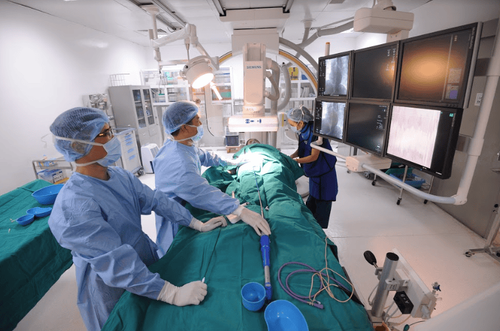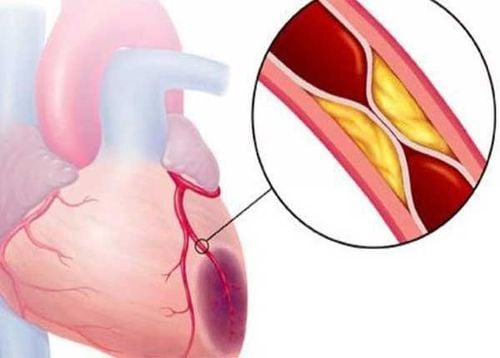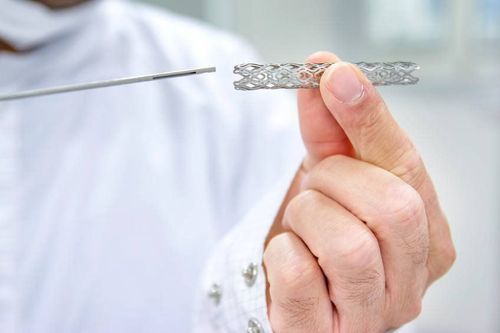This is an automatically translated article.
Coronary artery disease occurs when one or more branches of the coronary arteries are narrowed or blocked, reducing myocardial perfusion. If not detected and treated promptly, the disease can lead to many dangerous complications.1. How is coronary artery stenosis treated?
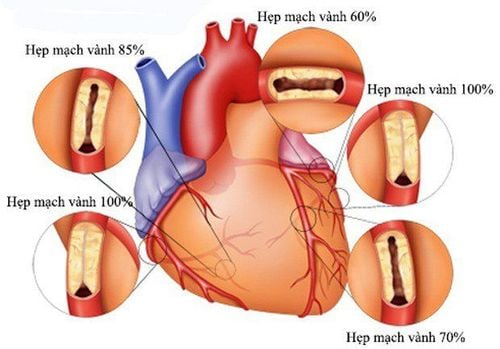
Bệnh hẹp đông mạch vành
Medical treatment: Using oral medications, combined with treatment of risk factors and lifestyle changes. Interventional coronary stenting. Coronary artery bypass surgery. There have been many studies showing that for patients with coronary occlusion in stable chest pain, medical treatment or coronary stenting does not change survival, but stenting method provide more symptom relief.
Stent placement and bypass surgery both help restore coronary artery perfusion, both methods are popular in our country. The choice of method depends on the specific situation of each patient. For example, patients with one or two coronary artery stenosis can be treated with stenting. As for the cases of tri-vessel stenosis, surgery is often required, especially in patients with concomitant diabetes.
In addition, the choice of treatment method depends on the complex lesion site or not. Like lesions in the trunk artery, or at the third fork, ... doctors will need to consult to decide whether to put a stent or surgery. For patients with acute myocardial infarction or at risk of myocardial infarction, acute stenting is indicated.
Thus, if the patient has coronary artery stenosis, they should see a cardiologist for advice on choosing the most appropriate treatment method.
2. Coronary artery stenting at Vinmec Times City
Percutaneous coronary intervention is understood as through a catheter, threading the wire to the stenosis, occlusion, and then bringing the balloon and/or stent up to widen the narrow, occluded place and put a stent to circulate the artery. Sometimes coronary intervention is performed along with other special procedures such as rotator cuff surgery, thrombectomy,...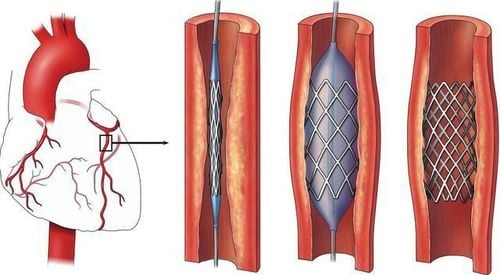
Can thiệp đặt stent động mạch vành điều trị hẹp tắc mạch vành
2.1. Indications and contraindications
Indications for coronary stenting in the following cases:Coronary artery stenosis from 70% on coronary MSCT or interventional coronary angiography, then stenting is required. However, sometimes in the angiogram, doctors may use other techniques to evaluate the narrowing before deciding to place a stent. Stable angina that is not controlled despite optimal medical therapy. Stable angina, evidence of myocardial ischemia (eg, positive myocardial perfusion scan or positive stress test) and coronary artery injury supplying a large area of purple muscle. Unstable angina or acute myocardial infarction without ST elevation (part of the electrocardiogram) with high risk stratification. Acute myocardial infarction with ST elevation. Angina occurs after coronary artery bypass surgery. The patient had symptoms of coronary re-stenosis after percutaneous coronary intervention. Coronary artery stenting is contraindicated in the following cases:
Lesions are not suitable for stenting, eg: Severe diffuse lesions. Injury to multiple coronary arteries. Distant injury. Coronary artery damage has a high risk of death if that coronary artery becomes blocked again during intervention. Patients who are prone to heavy bleeding such as: patients with coagulation disorders, patients with low platelet counts,... Patients who do not comply with treatment before and after intervention procedures. The patient had multiple re-stenosis after the intervention. However, many patients have relative contraindications, but percutaneous coronary intervention (stent placement) is their only treatment option.
2.2. Coronary artery stenting procedure
Interventional procedure for coronary stent placement includes the following main steps:Step 1: Open the vascular access through the radial or femoral artery. Step 2: Place interventional catheter. Step 3: Inject heparin Step 4: Perform coronary intervention First, angioplasty should be performed. Then proceed to place the stent in the coronary artery, expand the stent with appropriate pressure. Step 5: Take a coronary angiogram to make sure there are no complications such as dissection of the coronary artery, slow flow,... Step 6: Remove the catheter from the artery, suture the position of the opening of the blood vessel at where. Finish the trick.
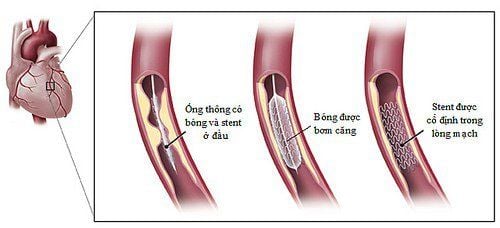
Các bước đặt stent động mạch vành
2.3. Quality standards for coronary artery angiography, dilation and stenting procedures at Vinmec Times City Hospital
Success rate: 95% due to the increasingly complex disease side. Complications of cerebrovascular accident: 0% Complications of acute myocardial infarction after the procedure: 0.5% Complications of acute renal failure due to contrast: 0.28% Bleeding complications: 0.8% Hemoperitoneal noncardiac: 0.3% Cardiac surgery after PCI complications: 0.15% Mortality: 0.6% 2.4. The doctor performing the interventional coronary stenting procedure are cardiologists who have been trained and certified to perform the technique. Includes:
Master - Doctor Nguyen Van Phong: Dr. Phong has more than 10 years of experience in the fields of echocardiography for adults and children. Currently, the doctor is working at Cardiovascular Center - Vinmec Times City International General Hospital. Doctor Le Duc Hiep: has many years of experience in the field of Cardiology, Cardiovascular Center - Vinmec Times City International General Hospital. To date, doctors have successfully diagnosed and treated 350 patients with this method.
2.5. Value of the technique Coronary artery stenting is one of the most effective and optimal methods to combat coronary occlusion. Help patients stabilize their health, prevent re-occlusion and prevent dangerous complications of coronary artery disease.
Interventional coronary stenting is one of the methods to treat coronary artery stenosis. This method has many advantages over medical and surgical treatment.
The hospital is equipped with a Cathlab Room with state-of-the-art equipment to meet the requirements of imaging and intervention when diagnosing and treating cardiovascular diseases.
Please dial HOTLINE for more information or register for an appointment HERE. Download MyVinmec app to make appointments faster and to manage your bookings easily.





